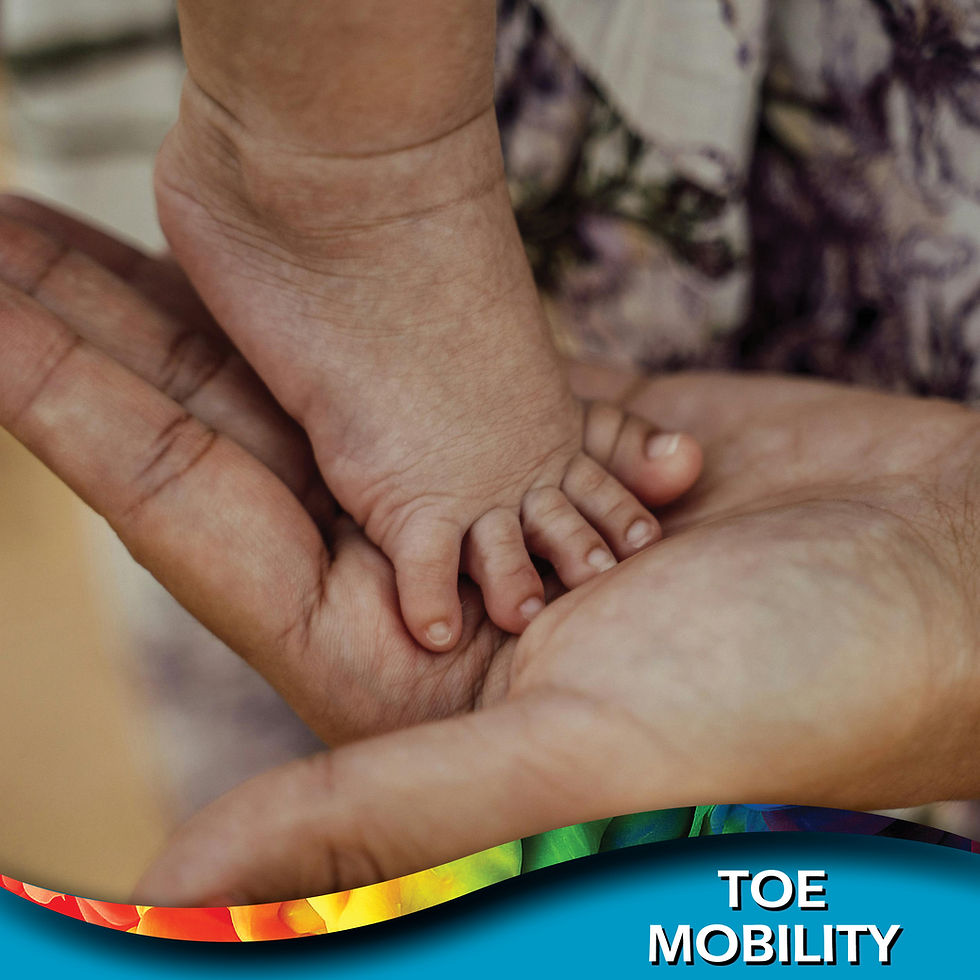How Toe Mobility and Function Transform Your Posture and Performance
- Matt

- Sep 1, 2025
- 4 min read
Updated: Sep 2, 2025
Do you ever think about your toes when you stand, walk, or work out? Most of us don’t, but these small structures play a massive role in posture, mobility, and athletic performance. Weak or inflexible toes can ripple upward, throwing off your alignment and limiting your movement. Let’s explore how improving toe mobility and strength can unlock better posture and boost your overall performance.

Why Toes Matter for Posture and Mobility
Your toes are the foundation of every step you take. They stabilize your body, absorb shock, and propel you forward. When toe function is compromised, it can lead to compensatory patterns that affect your ankles, knees, hips, and spine. Research from the Journal of Physical Medicine and Rehabilitation shows that foot mechanics, including toe mobility, directly influence postural stability and movement efficiency (jpmph.org).
Here’s how poor toe function impacts you:
Misaligned posture: Stiff or weak toes can cause overpronation or supination, tilting your foundation and straining your joints.
Reduced balance: Toes provide sensory feedback to your brain, helping you stay steady. Limited mobility reduces this input, increasing fall risk.
Decreased performance: Inflexible toes hinder push-off power in activities like running or jumping, reducing efficiency.
On the flip side, flexible and strong toes enhance your body’s ability to move naturally and efficiently, supporting everything from casual walks to high-intensity workouts.
The Science Behind Toe Mobility and Strength
Your toes contain 26 bones, 30 joints, and over 100 muscles, tendons, and ligaments. They’re designed for intricate movements, yet modern footwear and sedentary habits often restrict them. Studies from the International Journal of Therapeutic Massage & Bodywork highlight how restricted foot mobility, including toes, contributes to chronic pain and poor posture (ijtmb.org).
Key functions of healthy toes:
Shock absorption: Toes spread and flex to distribute weight evenly.
Propulsion: The big toe, in particular, generates significant force during push-off in walking or running.
Balance: Toe strength improves proprioception, your body’s ability to sense its position in space.
When toes are stiff or weak, your body compensates, leading to issues like forward head posture, lower back pain, or even knee injuries.
How to Improve Toe Mobility and Strength
You don’t need fancy equipment to enhance toe function. Simple exercises and habits can make a big difference. Here are practical steps to get started, which you also get trained in when you do Movement Therapy in the studio:
1. Toe Spreading Exercise
- Sit barefoot and spread your toes as wide as possible, holding for 5 seconds.
- Repeat 10–15 times, 2–3 times daily.
- Benefit: Improves flexibility and strengthens intrinsic foot muscles.
2. Toe Curls with a Towel
- Place a towel on the floor and use your toes to scrunch it toward you.
- Perform 3 sets of 10 curls per foot.
- Benefit: Builds strength in the small muscles supporting your arches and toes.
3. Big Toe Stretch
- Sit and manually pull your big toe upward, holding for 10–15 seconds.
- Repeat 5 times per foot.
- Benefit: Increases range of motion for better push-off power.
4. Barefoot Walking
- Walk barefoot on varied surfaces (grass, sand, or a soft mat) for 10–15 minutes daily.
- Benefit: Stimulates toe muscles and improves sensory feedback for balance.
5. Massage and Movement Therapy
- Roll a golf or hockey ball under your foot for 2–3 minutes per side.
- Focus on the arch and base of the toes.
- Benefit: Releases tension and boosts circulation, as supported by AMTA (amtamassage.org).
The Ripple Effect on Posture and Performance
When you prioritize toe mobility and strength, the benefits cascade through your body:
Improved posture: Strong, flexible toes stabilize your foot’s arch, aligning your ankles, knees, and hips for a more upright posture.
Enhanced athletic performance: Better toe function increases push-off force, improving speed and agility in sports.
Injury prevention: Balanced foot mechanics reduce stress on joints, lowering the risk of shin splints, plantar fasciitis, or back pain.
Increased comfort: Flexible toes reduce foot fatigue, making long days on your feet more manageable.
A 2023 study from ScienceDirect found that foot-strengthening exercises improved balance and reduced fall risk in older adults, proving the universal benefits of toe health (sciencedirect.com).
Making Toe Care a Daily Habit
To see lasting results, consistency is key. Incorporate these practices into your routine:
Go barefoot when possible: Ditch restrictive shoes at home to let your toes move freely.
Choose proper footwear: Opt for shoes with a wide toe box to avoid cramping your toes (nccih.nih.gov).
Schedule foot check-ins: Spend 5–10 minutes daily on toe exercises or self-massage.
Consult a professional: A massage therapist or physical therapist can assess your foot mechanics and recommend personalized strategies (kahehands.co.za).
Take the First Step Toward Better Posture
Your toes are small but mighty. Start with one toe exercise today—try the toe-spreading move while reading or watching TV. Notice how it feels to activate those tiny muscles. For personalized guidance, book a session with a massage therapist or movement therapist to optimize your foot health and posture. Visit resources like mapmovement.co.za for expert tips or to find a professional near you.
What’s your go-to way to care for your feet? Share in the comments below!








Comments